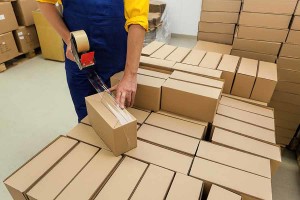Increasing population and changing consumer preferences are leading to the need for more economical and eco-friendly packaging materials. The discussion on sustainable packaging always centers on improving economic and environmental performance. While, traditional plastic and paper materials have many benefits, they are also major sources of waste generation. Companies are therefore, eyeing sustainable packaging materials that are environment-friendly across all levels of the supply chain. In addition, waste reduction has emerged as one of the major focus areas for the packaging industry, which would imply lesser need for waste disposal and treatment, resulting in lower levels of pollution.

With the advent of digital media, and significant efforts taken by governments and non-profit organizations, companies have realized the importance of maintaining the environmental balance, and have started adopting sustainable packaging products. Volatile pricing in petroleum-based raw materials and the need to reduce carbon emissions are a few of the areas that are also encouraging the use of sustainable packaging applications.
There are multiple innovations that have been made towards achieving sustainable packaging in recent times. Some of the emerging ones are:
- Bio-Plastics: Bio-plastics are made of renewable materials and are becoming increasingly important for packaging applications. Compared to petroleum based plastics, bio-plastics could considerably reduce the landfill waste and contamination of precious natural resources – air and water. Estimates suggest that bio-plastics could replace approximately 5-10% of overall plastics usage in packaging applications by 2025.
- Edible Packaging: Edible Packaging has been on the radar of R&D departments of many companies since the early 1990s, but only came into product development a couple of years ago. Food and beverage packaging companies are eyeing edible packaging products to enhance their brand image and align their product offerings in the wake of rising consumer interests. For instance, KFC came up with ‘Scoff-e-Cups’ edible coffee cups in the UK market in 2015. Made from cookies lined with heat-resistant white chocolate and sugar paper, this cup would considerably reduce the landfill waste.
Downsizing of packaging and breakthrough in new technologies are some of the factors that could propel the acceptance and demand for sustainable packaging. By 2025, aggregate investments in excess of a billion dollars are expected from leading market players involved in the supply of sustainable packaging products. This would include new installations or upgradation of existing converting lines. New technologies will outpace existing ones and companies will launch innovative products. For instance, in 2013, BASF introduced its sustainable packaging solutions, XELOREX, for the paper and board industry. The Packaging industry shall also witness an increase in number of start-ups to meet local demand for recycled packaging products. In addition, e-commerce companies are expected to contribute significantly to the growth of sustainable packaging products, with leading players such as Amazon and Alibaba already making conscious efforts to ensure that the packaging material used for their products is recycled and reused. Raw materials such as corn starch, and bubble wraps that offer a high proportion of recyclable content, are expected to take significant market share from traditional raw materials such as plastics and metal. This will directly benefit countries such as China, the U.S., and Brazil, which have easy availability of these raw material and an established packaging infrastructure.
Disruption creates opportunities! As one can see, sustainable packaging does more than improving economic and environmental impacts, it also improves social impacts. The day is not so far, where naysayers are going to acclaim that going sustainable is the new pacesetter in packaging. For more insights, please click here.